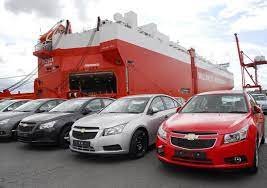How to Clear a Car from a Nigerian Port
It might be difficult to clear vehicles via Nigerian ports. When clearing your car from a Nigerian port, there are several things to be on the lookout for, such as unauthorized fees and lengthy processing waits. Despite the fact that the nation imports hundreds of thousands of vehicles each year, the billion-dollar business is not necessarily the simplest. You’ll need to be prepared to cope with a variety of issues, including the system’s inefficiency and the harshness of some officials.

For these reasons, it is advised that you be aware of the procedures, costs, and expectations when clearing a car in the port of Nigeria.
1. Obtain the bill of lading
The bill of lading is a document that your overseas shipping agent will send to you. The shipping business or cargo carrier will issue the document in the form of a receipt to acknowledge that the desired vehicle is on board their ship. The bill of lading contains all of the vehicle’s details, such as the vehicle’s name, brand and model, weight, VIN, year of manufacture, and so on.
This document could be sent to you via courier services such as DHL and FedEx, or via email, if you want to do “Print at Destination,” which will print a copy of the bill here in Nigeria.
2. Request an import duty valuation.
3.Enter the valuation into the custom serverer
The details must be entered into the custom server once the valuation is obtained from the custom command. This is known as “Direct Trader Input” (DTI),” or more colloquially, “punching.”
This action can only be taken through the same registered agency that utilised the letterhead paper for the vehicle valuation. At this point, the consignee’s tax identification number will be requested.
Print the DTI or Assessment Notice and the Single Goods Declaration Form once completed (SGD). The SGD describes the transaction as well as the type of vehicle and the contents of the vehicle.
4. Pay import duty
Check the bank that was specified while punching to pay the import duty. You should bring the assessment notice with you because the bank will require it for import duty payment. The bank will give a bank receipt once the payment is made. You can also make the payment online, but you must pick up the proof of payment from the bank.
5. Physical inspection and customs clearance
This allows customs to confirm that the information on the documents matches the description of the vehicle. They will confirm the vehicle’s make, year, and VIN/chassis. They will also verify and validate the amount of duty paid. They will then submit a report to the releasing office.
6. shipment company print exit
7. Shipment in the shipping business
8. Customer service sign gate is another straightforward step
Register and sign in at the gate. You must give the unique release paperwork as well as the shipping company’s exit copy. They will inspect and verify that the duty was paid before stamping and signing the paperwork.
9. Gather TDO (Terminal Delivery Order)
To collect the TDO, you must present the shipping company’s payment receipt as well as a copy of the signed ate document.
10. The vehicle will be delivered on the ground floor
Documents can be provided so that the car is brought to the open floor and cleared to pass through the final gate.